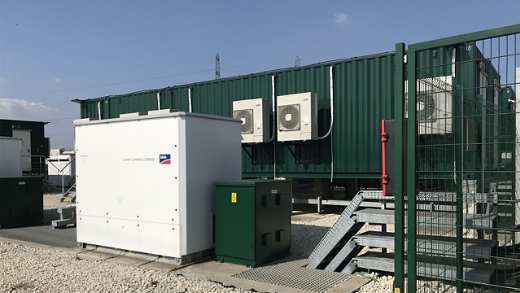Battery Energy Storage: Taking loss prevention to the next level

With the pressure mounting to transition away from our reliance on fossil fuels, efforts to innovate and develop renewable energy technology have intensified. To be of value, power generated by renewable energy sources need reliable, secure energy storage facilities, which deliver benefits such as frequency stabilisation and meet peak demand to ensure grid stability.
Lessons Learnt
This focus on innovation has meant that grid scale battery energy storage has finally come of age, with the associated standards and regulatory environment maturing. But how has this come about so quickly? It’s all down to lessons learnt from recent battery energy storage fires. In all these incidents, the fire was started by thermal runaway initiated in the lithium-ion battery module.
So, what are these key lessons? Early battery energy storage fires in South Korea showed need for improvements to battery protection systems, environmental controls, installation procedures and system integration*. In Australia, the key takeaways from the Victoria Big Battery fire are ensuring safety systems are active during commissioning phases and liquid cooling systems are pressure checked before operations commence**. In another incident, it was shown that use of deflagration vents incorporated into the battery enclosure design can mitigate against vapour cloud explosion risk from accumulated gases within the battery enclosure generated during lithium-ion battery thermal runaway.
Loss Prevention Innovations
Typically, grid scale battery energy storage sites are remote and unmanned. Therefore, it would be possible for a fire event to propagate across multiple battery enclosures before an effective fire suppression response is deployed. Delaying or limiting fire propagation across battery enclosures is key to minimising losses. There are several innovative ideas that are currently gaining industry recognition. These include the application of intumescent coatings to battery enclosure exteriors and deluge systems designed to internally flood a battery enclosure when thermal runaway is detected.
Exterior application of intumescent coatings on steel battery enclosures can slow the effects of fire. It’s achieved by creating an expanding insulation layer when activated by extreme heat. This minimises heat transfer, reducing risk of initiating thermal runaway or fire in neighbouring battery enclosures. Thereby allowing more time to activate the necessary fire suppression response. For the coating to work effectively, a critical assessment is required to ensure the type of intumescent paint formula being used is suitable for battery energy storage applications. Mainly because coating performance characteristics vary and the quality of its application must be appropriately controlled.
Flooding battery enclosures with a deluge system from fire hydrants or mains water supply is very effective for rapid cooling and containment. This reduces the risk of heat and fire propagation to adjacent battery enclosures as well as minimising water wastage for fire suppression. In fact, one battery vendor has already incorporated dry riser access points into their battery enclosure design to facilitate this solution. To be effective, battery enclosure water tightness requires a robust assessment. Also, battery enclosure venting specifications need re-evaluating to manage additional hydrogen generation from water contact with lithium-ion batteries. Environmental management is also very important following an incident, as water inside the enclosure requires controlled disposal.
There are exciting opportunities for battery energy storage developers to continually minimise their risk exposures. It’s becoming clear that pursuing innovative approaches for loss prevention through use of intumescent coatings and internal deluge systems can be a game changer if they’re assessed and applied correctly.
Tariq Dawood
Renewables Risk Consultant, Commercial Lines.
* World Bank Group Korea Office, 2020 Innovation And Technology Notes © World Bank. World Bank Document Licence: Creative Commons Attribution (CC BY 3.0 IGO).
**Energy Safe Victoria, 2022, Cooling system leak led to Victorian Big Battery fire, © Energy Safe Victoria, Creative Commons Attribution 4.0 international licence.
